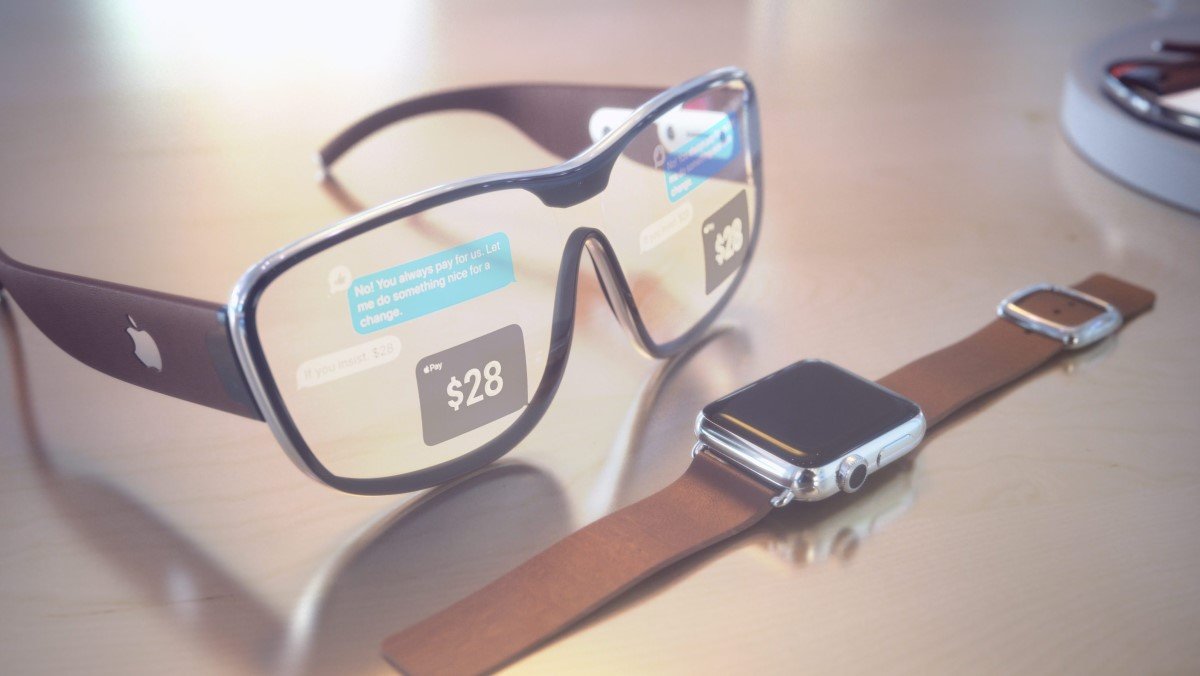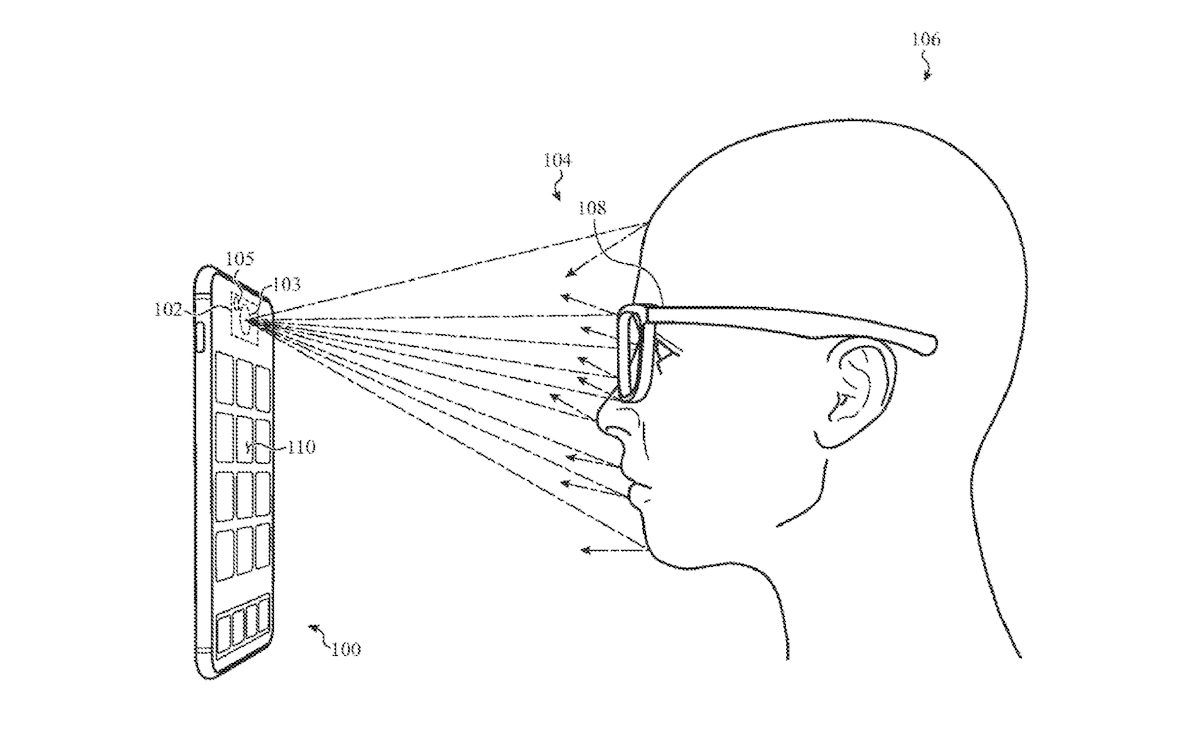The US Patent & Trademark Office has granted Apple a new patent which describes that Apple Glass could offer a better view of a device’s display and a blurring privacy feature. Titled “Systems and Methods for Switching Vision Correction Graphical Outputs on a Display of an Electronic Device” the filing explains the use of iPhone’s FaceID scanner to authenticate a user wearing special eyewear (Apple Glass) and to grant access to a profile associated with the eyewear.
Based on information obtained from rumor mills and patent, Apple is developing an augmented reality (AR) glass that will allow users to carry different tasks without touching their iPhones like making or receiving calls, sending or reading texts, getting directions, displaying an AR keyboard, and even unlocking other devices via gaze detection technology.

Apple Glass might help users will visual impairment have a better vision of the display and offer a special privacy feature
As detailed in the filing, users with prescription eyewear may have difficulty in viewing the display of their device, and putting on or removing eyewear may cause strain on the eyes.
In order to view an electronic display, a person with a vision deficiency may need to put on or remove prescription eyewear to avoid eye strain and/or to view the electronic display clearly. If such a person is unable to easily remove or put on the prescription eyewear, it may be difficult to interact with the electronic display and a user experience with the electronic display may suffer.
Therefore, the company proposes special eyewear (Apple Glass) that will enable users with any form of visual impairment to have a more clear view of the iPhone’s or iPad’s display and access different profiles associated with the special eyewear.
A method of providing a graphical output may include scanning at least a portion of a user’s face using a sensor; generating a depth map using the scan; and determining a similarity score between the depth map and a set of stored biometric identity maps that are associated with a registered user. In response to the similarity score exceeding a threshold, the user may be authenticated as the registered user. The method may further determine a corrective eyewear scenario, select a display profile that is associated with the corrective eyewear scenario, and generate a graphical output in accordance with the selected display profile.

Furthermore, the patent also enlists a special privacy feature that will blur the display if the user does not want nearby people to see their content.
The corrective eyewear scenario may correspond to the registered user wearing a privacy eyewear and the graphical output may include a privacy blur that appears unblurred when viewed using the privacy eyewear.
Read More: